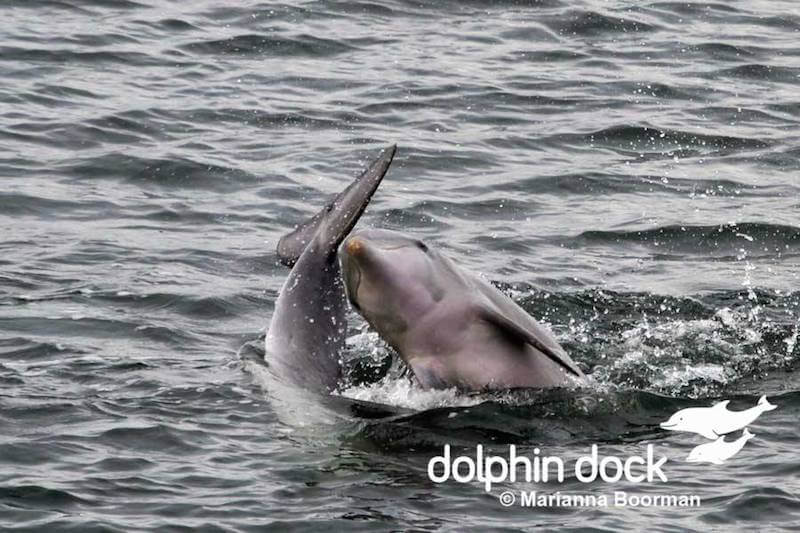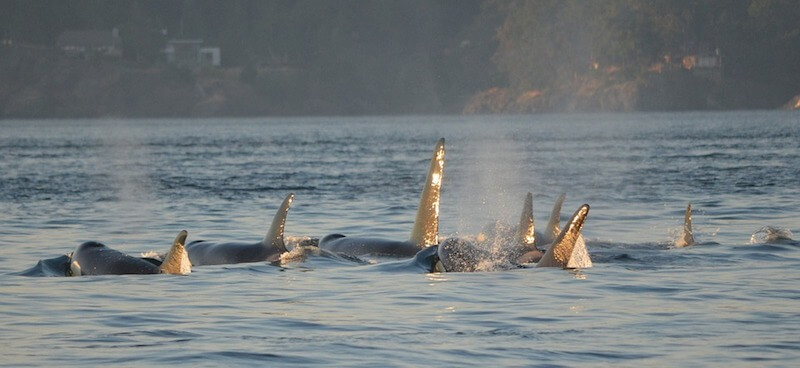By Maureen Jouglain
In this video taken in the summer of 2016 off the land-based Pointe-Noire Interpretation and Observation Centre, a beluga is seen exhibiting curious behaviour. For several minutes it interacts with a piece of wood, putting it on its back and rolling it, repeating the cycle several times. Is it a form of play? A scratching technique? Or the behaviour of a beluga in mourning? Although at this time interpreting this behaviour is mere speculation, there are a number of hypotheses.
Curiosity or play?
Play-type behaviours are widespread among cetaceans. Bottlenose dolphins are famous for playing with turtles, jellyfish and even objects. Bowhead whales have been seen in the Beaufort Sea handling a tree trunk with their pectoral and caudal fins and trying to keep it balanced on their backs.
Luc-Alain Giraldeau, behavioural ecology researcher at the Université du Québec à Montréal (UQÀM), says that play almost always involves an established behavioural pattern. “Play behaviour is very similar to a stereotyped behaviour [identical comportment in individuals of the same species], but stops short of fulfilling the latter’s ultimate purpose.” For example, if two individuals engage in play-fighting, there will be no injury. Here, in the video, the movement recalls that of a female bringing her calf to the surface to breathe. Might the beluga be pretending, in a certain way, to be a mother? This theory cannot be ruled out.
Distinguishing between play and exploration of the object can be difficult, especially since play can be considered to be exploratory. Where does one draw the boundary? Not an easy task. It would seem, however, that exploring involves increased use of the senses such as sniffing, drinking, and touching, while playing is characterized by a greater employment of motor activities like manipulating, pulling, and pushing. Is the beluga just curious or is it playing with that stick?
Learning or compensation?
Far from simple amusement, the behaviours that we associate with playing can also fulfil an important educational function. In its interactions with the environment, the young individual develops his or her social and cognitive skills. Take for example killer whales, which are notorious for playing with their prey before devouring them. If, upon seeing a killer whale hurl a seal into the air, one might conclude that it is a cruel game, it is often a question of elaborate hunting techniques that adults are teaching to their offspring. Might the interaction of the beluga with this piece of wood represent a learning experience?
In a recent article, we discussed mourning in toothed whales. Amongst other things, the article describes the existence of compensatory behaviours following the loss of a congener (Translator’s note: animal of the same taxonomic genus). In fact, several species have been observed carrying objects or even decomposing bodies as a substitute for their departed companion. This was notably the case of pilot whales observed on a number of occasions carrying sea lion carcasses. Is it possible that this piece of wood is being used by this beluga as a substitute?
Mammal behaviour is still shrouded in mystery and coloured by human interpretation. Only through observations and long-term studies can we hope to learn more about this branch of biology that is still poorly understood.
Pour en savoir plus
- Smith, T. G., & Sleno, G. A. (1986). Do white whales, Delphinapterus leucas, carry surrogates in response to early loss of their young?. Canadian journal of zoology, 64(7), 1581-1582.







